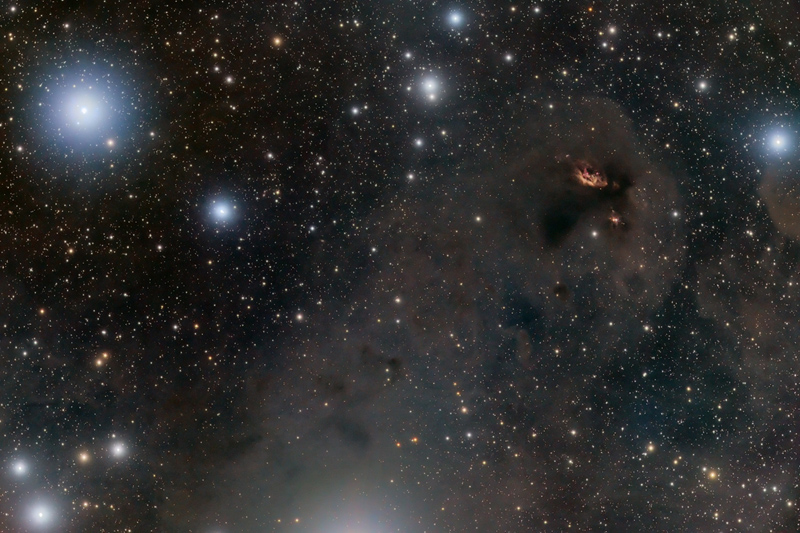I am perhaps a bit early here, but since we are talking about Recent Submissions 2011 December 1-4 and it is already the 5th here, as I'm writing this, I'll go ahead and post it.
ki_cz, you have contributed many images here, and they are all beautiful. Thank you!
Alfonso Carreño, you bring out the high excitation of the North America Nebula compared with the Pelican Nebula.
I like images that bring out the proximity of and yet the difference between the Horsehead area and the Orion Nebula. You do that very well, François Bernier. (Surely that is your name?)
There are many good solar images here. John Chumack, your Sun image shows us both the solar granulation, some sunspots and a mighty solar flare. Theo Ramakers, your images do the same. Rajaram Dhinakar, you image is nice and original.
David Muelheims, I like the rainbow-like flashes of color from the Crab Nebula in polarized light.
Kelvin Phoon, I like your image a lot! It really reminds me of a the appearance of the largest known volcano in the solar system,
Olympus Mons, except that you nebula is a lot more colorful!
Ole C. Salomonsen and kwon o chul, you have both photographed some great auroras.
Markus Noller, I always like images that show both large nearby galaxy NGC 7331 as well as the distant Deer Lick Group right next to NGC 3771 and probably similarly-distant Stephan's Quintet. I love the fact that your image shows us that Stephan's Quintet is noticeably bluer than the Deer Lick Group, even if we ignore the small blue interloper in the Quintet, NGC 7320. It is certainly quite right that Stephan's Quintet should look bluer than the Deer Lick Group, because the Quintet contains so much more star formation.
Jack Fusco, I completely love your "Light on the Dog" (Sirius) image! My mother grew up in a small village in the 1930s, and the skies above her were pitch black at night. Her father sometimes showed her the stars, and she once told me, "I always thought Sirius looked a bit blue". It did, Mom, because it was bright enough to trigger some color response in your eyes! And Jack Fusco, you certainly makes us understand how bright and blue Sirius is, even though your blue laser "helps" Sirius a bit!

Adam Block, your image is great as usual. It brings out incredible turmoil in this star formation region. We can see veritable "tornadoes" of dust as well as ionized pink blotches, dots and intricate structures of ionized gas, as well as the large black "back" of the cloud that got concentrated enough to be able to trigger star formation in its "stomach".
When I first saw the picture of the Dragonfish's mouth, I was somewhat unimpressed. Another nebula, very red and monocolored. Ho hum. But then I read the caption, and wow!
http://iopscience.iop.org/2041-8205/743/2/L28 wrote:
Young OB associations with masses greater than 104 M ☉ have been inferred to exist in the Galaxy but have largely evaded detection. Recently, a candidate OB association has been identified within the most luminous star-forming complex in the Galaxy, the Dragonfish Nebula. We identify 18 young, massive stars with near-infrared spectroscopy from a sample of 50 members within the candidate OB association, including 15 O-type and 3 luminous blue variables or Wolf-Rayet stars. This number matches the expected yield of massive stars from the candidate association, confirming its existence and ability to power the parent star-forming complex. These results demonstrate the existence of a 105 M ☉ OB association, more powerful than any previously known in the Galaxy, comparable in mass only to Westerlund 1.
What an association! What a picture! Thanks!
Roberto Barcellona, I always like new discoveries. That is an interesting image of yours!
Alistair Symon, your Sharpless 239 image looks very handsome indeed. Tell me, are we really in the Hyades here?
Rolf Wahl Olsen, I have previously praised your fantastic image. I'm glad to see it back in an even better version!

Thanks to everybody who contributed images here!
Ann













